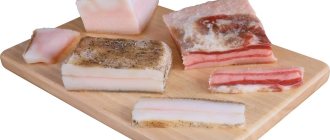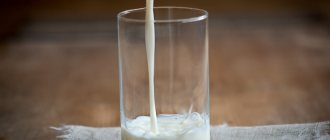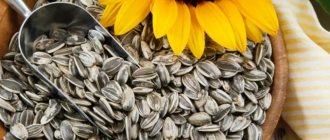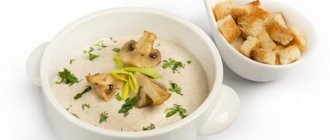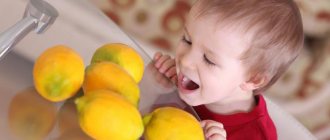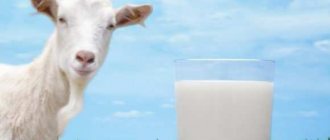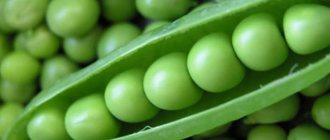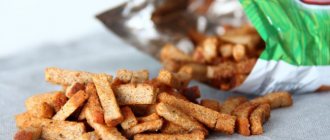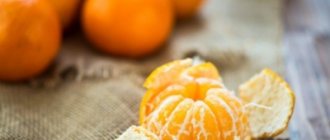There are few products that cause as much controversy among experts about the health benefits and harms as there is about lard. They have been going on for several years and are still ongoing.
Knowing about the high calorie content of lard, parents are interested in the possibility and timing of introducing it into the child’s diet. Sometimes such interest is provoked by persistent recommendations from grandmothers or neighbors to give lard even to infants. And on the Internet you can find information on forums about the good tolerability of this product by young children.
Tallow is fat deposited in the subcutaneous layer of animals as a reserve of nutrients. The most commonly consumed food is lard. The product has been known since the times of the Roman Empire. Slaves were fed lard to replenish energy and strength.
Lard as a food product is common in many countries. It is fried, stewed with vegetables, or added to porridge. In some countries, the use of lard has national characteristics. Europeans eat it salted, raw, boiled, fried, smoked.
Composition and calorie content
Lard is a high-calorie product that consists of 90% animal fats.
High-calorie and easily digestible lard contains many beneficial substances.
The rapid absorption of lard compared to other fats is associated not only with its composition, but also with its low melting point (370), almost equal to body temperature.
About 90% of the composition of this product is fats (in the form of saturated and unsaturated fatty acids). The presence of essential fatty acids in lard makes it similar to vegetable oils:
- linoleic,
- linolenic,
- oleic
In addition to these acids, which are part of vitamin F, the product contains essential arachidonic acid. It is not found in vegetable oils.
100 g of pork fat contains 9.5 g of polyunsaturated fatty acids (including omega-6, omega-3), which play an important role in the body, ranging from ensuring normal functions of the brain and heart.
Other nutrients in lard are:
- essential amino acids;
- nonessential amino acids;
- cholesterol;
- lecithin, which is a natural cholesterol antagonist;
- vitamins (B4, , , F, PP, );
- minerals (potassium, iron, phosphorus, copper, sodium, selenium, magnesium, zinc, calcium).
The calorie content of 100 g of fresh raw product is 760-800 kcal. The calorie content of salted lard is higher due to the decrease in water in its composition - 815 kcal. Smoked lard contains even more calories - 815-900 kcal, but it is not one of the foods that are healthy for children.
Lard during lactation
Lard can be consumed while breastfeeding, but in strictly limited quantities. Nursing mothers should remember that this delicacy of animal origin is high in calories, and therefore it is consumed within the normal range. Otherwise, young women risk gaining extra pounds.
So, can lard be fed to nursing mothers? Doctors answer this question positively, but consumption should be in minimal quantities. In order to introduce fat of animal origin into your diet and not harm the baby, a woman is recommended to consume lard starting from 10-15 g.
It is important to remember a few rules:
- The maximum permissible daily intake for a nursing mother should not exceed more than 1-3 pieces.
- It is recommended to consume salted lard only 5-7 months after birth.
- Allergies or digestive disorders in the baby appear within 48 hours after the mother eats a new dish. They are expressed in the form of skin rashes, stool upset, swelling, and bloating.
- A nursing mother is allowed to consume only the product with salt, without any extraneous spices. Any pepper or seasonings have a negative effect on the body of both a nursing woman and a newborn.
After introducing this product into the diet, it is necessary to carefully monitor the condition of the newborn. Any signs of colic, indigestion, restlessness, or constant crying indicate that the child is not yet ready to eat such a heavy and fatty product.

If there is no negative reaction on the part of the child, this means that he tolerates breast milk normally, even if the mother consumed animal fat, and therefore there is no need to give up his favorite product.
Is it possible or not?
There are two mutually opposing opinions about the possibility of including lard in children's diets.
Many pediatricians believe that lard will benefit the child's body when consumed in moderation. Others are categorically against its use by children.
There are many pros and cons. The arguments of specialists who allow children to consume lard will be presented in the section on the benefits of the product.
- Supporters of the ban on lard, one of whom is Dr. Komarovsky, are based on WHO recommendations on the minimum amount of animal fats in a child’s diet.
- Their other arguments: such an amount of fat can be stressful for the body; the calorie content of the product is too high. And the notorious cholesterol...
But the child begins to receive fats of animal origin through mother’s milk. When complementary foods are introduced in the form of cottage cheese, kefir, meat and fish, the child also receives animal fats rather than vegetable ones.
Pork fat, unlike beef fat, contains fewer calories, is easier to digest, and contains essential amino acids.
Both consumers and scientists are paying closer attention to the cholesterol content in lard. It is equal to 70-100 mg/100 g.
It turns out that there is much more of it in 100 g of other products:
- 200 mg – in butter;
- 670 mg is contained in beef liver;
- 1126 mg of cholesterol in the kidneys.
There is also more of it in eggs, cheese, and veal than in lard.
And, of course, the harm from pork fat is less than from trans fats used by manufacturers to make confectionery products that parents treat their children to.
The only argument that is difficult to argue against is the probable risk of infection by parasites (helminths) through lard:
- If the product is not from your own farm, then it is impossible to guarantee compliance with sanitary and hygienic rules by store and market sellers.
- To prevent such infection, you should boil the lard (if you are not sure of its quality) before giving it to the child, but this will destroy some of the beneficial substances.
Lard (melted lard) can be added to vegetable puree or stew. It is not recommended to give fried lard to children.
But still, the above arguments cannot be a serious reason for refusing to introduce lard into the children's diet.
Useful properties of lard
The main beneficial properties of lard are provided by fat, primarily monounsaturated fat. Fifty percent of the fat in the product is just that, and it is mainly represented by oleic acid.
Approximately three percent of the fat is palmitoleic acid, which has valuable antimicrobial properties. About 40 percent of fats are saturated, which is considered a potential source of harm. However, this provides the product with some properties that allow it to be stored for quite a long time.

Pork fat also contains a certain form of phosphatidylcholine, which has antioxidant activity superior to that of vitamin E. This may be one explanation for the fact that this fat is relatively stable and not susceptible to rancidity from free radicals.
Meat products generally have very high nutritional values, and lard is no exception. A typical 100g serving contains:
- 37 grams of high quality animal protein,
- vitamins B1, B2, B3, B5, B6 and B12,
- 89% of the daily value of selenium,
- 53% of the daily value of phosphorus,
- significant amounts of minerals iron, magnesium, zinc and potassium.
However, all of the nutrients found in lard that provide benefits are also found in other, less fatty pork products. Therefore, it is worth finding out in more detail what the benefits of lard are for the human body.
For women
Oddly enough, the product can be useful for burning fat and losing weight. Scientists have found that it is an excellent source of the hormonal coenzyme Q1, which speeds up metabolism when combined with brisk walking. This explains the benefits of lard for women on a diet. In fact, a study found that eating a slice of lard an hour before going on a hike doubles your calorie burn.
What else could be the benefits and harms of lard for a woman’s body? The product contains a lot of selenium. It is an essential micronutrient and a key component for thyroid health and immune system support.

The harm lies in the very high calorie content and high salt content. This means that lard should never be overused.
Advice! If you mix 100 grams of lard with the same portion of lentils, you can provide your body with the daily requirement of selenium.
For men
The benefits of lard for the male body are as follows. It has a high protein content. Consuming this product daily allows you to successfully build muscle mass. According to experts, a man needs 1.6 g of protein per kilogram of weight every day. This means that two slices of lard at lunch already covers 28% of your daily total muscle fuel.
In addition, lard and bacon are high in phosphorus, which can significantly ease a hangover. This is explained simply: this microelement has certain beneficial properties that support renal function.
For pregnant and lactating women
What are the benefits of lard during pregnancy? Its consumption helps in the development of the fetal brain.
Because lard contains a lot of saturated fat, it makes you feel full immediately after eating. Since it is low in carbohydrates, it helps regulate the weight of women who rapidly gain weight in the second half of pregnancy.
It also has antioxidant beneficial properties that help fight disease and even promote better development of the fetal thyroid gland. Phosphorus and vitamin A contained in the product are necessary for the proper growth and maturity of the fetus and its nervous system. All these beneficial properties of the product are also relevant for nursing mothers.
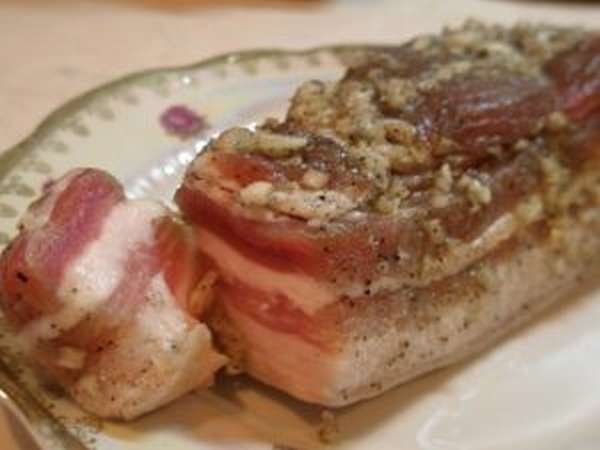
Lard is a tasty addition to a pregnant woman's diet, but it must be prepared correctly. It is usually available smoked and salted, with some spices, additives and even sugar to enhance the taste. Thus, the presence of these components in abundance can cause harm to health. To increase the benefits and minimize the harm, you can purchase the raw product and salt it yourself, adjusting the amount of added components.
It's worth noting that newborns' immune systems are not as well equipped to fight bacteria as adults, so you need to be careful. It should be remembered that lard without preservatives with a small amount of salt has a short shelf life.
Advice! According to medical experts, the ideal daily lard intake for pregnant women is 13 grams based on a daily diet of 2,000 calories.
The benefits of lard for children

Proponents of allowing children to eat lard base their arguments on the benefits that a child’s body will receive if pork fat is properly introduced into the diet.
According to these experts, it is not only possible, but also necessary to give lard to children, but only do it correctly, avoiding excesses.
The intensive development of the child will be facilitated by the beneficial nutrients of fresh, high-quality lard in combination with its high energy value.
The most compelling arguments in favor of lard consumption by children:
- Lard is easier to digest than many other products (sausages, for example).
- It has a beneficial effect on digestion and has a choleretic effect.
- Fat-soluble vitamins (D, A, E) contained in lard are absorbed better than tablet forms.
- Arachidonic acid is involved in the metabolism of cholesterol, helps normalize the activity of hormones, improve the cellular composition of the blood, stimulates the activity of the brain, heart muscles, and kidneys.
- Cholesterol is necessary for the synthesis of immune cells that protect the body from viral and bacterial infections: it is needed for the formation of cell membranes.
- Vitamins E and A provide local tissue immunity, which is why consuming lard is so important in the autumn-spring period, a time of increased incidence of viral infections.
- Selenium and vitamins A, E, which have antioxidant properties, help cleanse the body of toxins, radionuclides and waste, so it is important to include lard in the diet of children from environmentally unfavorable regions.
- When consumed regularly, lard promotes accelerated healing of wounds that so often appear in fidgets.
- Pork lard is a powerful source of energy, which is so important for children with high academic loads, as well as when playing sports.
- Salo has a beneficial effect on the cardiovascular system and helps cleanse blood vessels.
Other positive or healing properties of lard are also known:
- a slice of fresh unsalted lard, placed between the cheek and gum, will relieve acute toothache or reduce its intensity, and slow down the spread of the infectious process;
- lard (you can mix it with honey) applied to the joint will relieve joint pain;
- lard can be used as a base for a hair strengthening product.
The beneficial properties of lard are enhanced when combined with cereals and boiled vegetables. Pork lard has a biological activity that is 5 times greater than that of butter and beef fat.
Is it possible to eat lard during pregnancy?
Women in an interesting position are constantly drawn to different goodies: either give them an orange, or they want herring, chocolate, and lard. But during pregnancy, indulging your culinary whims is not safe. There are many factors to consider and the basics of healthy eating to know when carrying a child. Let's get acquainted with them and learn about the compatibility of different types of lard and pregnancy.
Proper nutrition during pregnancy
There is a popular belief that expectant mothers should eat twice as much as before. They say they have to eat for two. This myth leads to the fact that in the last stages of pregnancy, women turn into walking buns, suffering from obesity and acquiring a lot of associated diseases.
By the end of the term, the child reaches a weight of 3-4 kilograms, and mothers sometimes gain 20-25 kilograms in 9 months. To prevent this from happening, you need to know: an ordinary woman needs 1700 to 2000 kilocalories per day, and a pregnant woman needs 2500.
This norm covers all expenses of both the mother and the fetus, which go towards the formation of the placenta, amniotic fluid and membranes, and the uterus.
Fat accumulation during pregnancy is normal within reasonable limits. It is justified by the need to replenish energy reserves after childbirth, while breastfeeding the child. That is why a woman should systematically gain weight from 10-12 weeks of pregnancy.
Fat accumulates on the waist, buttocks, thighs - problem areas, and this accumulation ends by the 32nd week of pregnancy. Excessive fat deposition always negatively affects the course of pregnancy, childbirth, and the formation of the child itself.
That is why for expectant mothers there are classes on special programs that include healthy eating, information about the norms for consuming foods and vitamins. You need to adhere to them for your own good and the good of the baby.
The expectant mother needs to remember the double responsibility every day, because even a decent portion of herring consumed at night can cause not just swelling and stress on the kidneys, but a significant deterioration in well-being. The same goes for lard.
Beneficial properties of lard during pregnancy
The benefits of lard for the diet are determined by the combination of fatty acids (palmitic, linoleic and oleic), carotene, vitamins D, A, E.
Regular consumption of lard improves the liver. Its combination with the best plant antioxidant, garlic, enhances the benefits of the product. Lard also has a beneficial effect on the cardiovascular system. Selenium contained in lard is needed for pregnant women, nursing mothers, and athletes.
External use of this product relieves arthritis and arthrosis, burns and frostbite, mastitis and eczema. Lard helps eliminate heel spurs and toothache. It helps remove toxins and carcinogenic substances from the body. This property of lard determines its value as a preventive product in the prevention of cancer.
So, can expectant mothers eat lard? It is not recommended to abuse animal fats, because they are carbohydrates. Moreover, if we are talking about salted lard, then two dangerous factors need to be taken into account.
Firstly, the high calorie content of lard is from 720 kilocalories per 100 grams, which corresponds to the calorie content of a full meal. Secondly, the salt in this product retains fluid in the body of a pregnant woman, which means it contributes to the formation of edema.
Therefore, if there is a strong desire, a woman should give preference to a lightly salted product or a completely unsalted piece of 20, maximum 30 grams.
Smoked lard during pregnancy
You need to know that regular smoking contributes to the transfer of the product to the category of carcinogens. This has long been known. In addition, mass-produced smoked products contain a lot of additives: preservatives and stabilizers, dyes and flavors.
They are far from harmless to the health of a pregnant woman and create additional stress on the liver, gastrointestinal tract, and kidneys. By the way, even an absolutely healthy person can feel pain and tremors in the liver when consuming smoked lard. This is the body’s reaction to the additives contained in smoked lard.
In addition, additives can cause allergies in the body of the expectant mother.
Cold smoking is especially unsafe. The duration of the process accumulates radioactive isotopes in the product.
So, for pregnant women, lard will do more harm than good. And if the expectant mother has already gained excess weight, then it is better to temporarily forget about her favorite product, especially its smoked form, for the benefit of the unborn child. Well, wait a little, time flies!
Especially for beremennost.net Elena TOLOCHIK
Source: //beremennost.net/salo-pri-beremennosti
Possible harm
When introducing lard into the diet of children, it is necessary to exclude excessive infatuation with lard, as this is fraught with digestive upset due to the increased load on the pancreas and liver.
The manifestation of such a disorder may include the following symptoms:
- the appearance of undigested particles of eaten food in the feces;
- diarrhea;
- vomit.
If a child has a sedentary lifestyle, excessive consumption of lard can lead to obesity.
If you have chronic diseases of the digestive organs, the use of pork fat must be agreed with a gastroenterologist or pediatrician.
Children should not be given fried lard: such a product not only loses some of its beneficial properties, but also acquires carcinogenic properties (promotes the development of cancer cells).
How to choose lard
Not all lard is the same: there is hard and soft, fresh and salted, smoked, there is a meat layer or not, the skin is thin or thick. Even the area of the pork carcass from which the lard is taken matters.
It is better to buy the product on the market: there is a wider range and there is a greater chance that the lard is fresh.
To choose soft, high-quality lard (hard lard is not suitable for a child), you should follow these tips:
- You should buy lard from a trusted place: the seller is neat and has a quality certificate. The skin has a stamp indicating that it has passed quality control.
- You need to ask the seller what gender the slaughtered animal was (lard from pigs is tastier) and evaluate the smell of the product: from wild boar it has an unpleasant smell of urea, it will be tougher and less tasty. You shouldn't buy it.
- Fresh, high-quality lard has a pleasant meaty smell and is white in color, which is what you should take. A slight shine indicates freshness.
A yellowish or gray color or tint is due to old or spoiled lard. If the blood is not drained from the carcass before cutting, a reddish tint of pork fat appears. With any of these options, it’s not worth buying lard; its quality is worse.
- Where the fat is cut on the carcass affects its appearance and taste:
- the fat from the neck and head of the carcass is tougher;
- soft and tender - from the back, it is consumed fresh and salted;
- the bacon from the brisket is thinner, with a layer of meat, but tasty and soft;
- The lard from the ham is soft, it is better to use it for minced meat.
- You also need to evaluate the thickness of the skin: the thinner it is, the softer the lard. The skin should not look dry and there should be no bristles on it.
The most useful areas are located 2.5 cm from the skin itself - these layers of fat should be given to the child.
Lard with a meat layer is more suitable for frying and baking. It should not be given to children, since parasites and bacteria may be in the layer, because they do not survive in the fat itself.
It is better not to buy lard marinated in spices: most often, spices help sell a low-quality product. Moreover, such lard, as well as smoked lard, is not suitable for children.
Lard should be stored in the refrigerator or freezer. The container must be closed, as it quickly absorbs foreign odors.
- Before freezing, lard should be cut into portions and each of them should be packed separately in parchment. Re-freezing of the product should not be allowed. It can be stored in the freezer for a year or more.
- Fresh lard can be stored in the refrigerator for no longer than 24 hours.
But it can be salted. To do this, several cuts are made on the piece, and salt is poured on all sides (and into the cuts). There is no need to be afraid to “overdo it” with salt: lard will take no more than the required amount.
You can pickle the product in an enamel pan or in a glass jar. You can also store it in the refrigerator, closing the jar with a lid. The shelf life of salted lard is 4-5 weeks.
At what age should it be given to children?
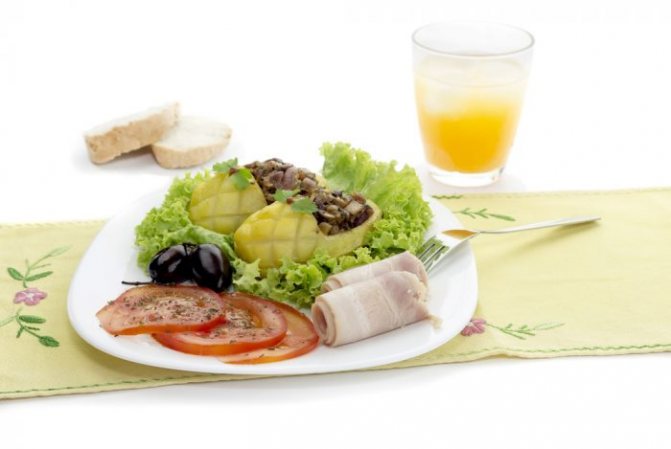
Of course, you should not give lard to a child receiving breast milk or formula. When the baby begins to receive food from the common table, that is, from about 1.5-2 years old, you can start giving him lard from 10 g or adding lard to porridge with a frequency of no more than 2 times a week.
After the first tests, you need to monitor the body’s reaction. It is optimal to use a boiled product: it will be somewhat more tender, and at the same time the risk of infection of the child is eliminated.
If you regularly consume such a high-calorie product, you should take care of reasonable physical activity for the child (for example, active games in the fresh air).
Salo on the children's menu
High-calorie animal fats are found in breast milk. For this reason, lard cannot be considered categorically harmful for children and the product can be introduced into their diet. However, you should observe moderation and give your child small portions of this meat delicacy.
At what age can children have lard?
When the baby begins to receive food together with adults from a common table, then, in addition to other foods, you can give the child lard to try. This usually happens around one and a half to two years.
You can get rid of the risk of helminth infection if you prepare lard using heat treatment . For example, by melting a small piece of this product and adding it to a side dish.
Don’t forget about the basic rules for choosing food.
First of all, lard must be fresh and of high quality .
You should not buy lard from dubious retail outlets.
Before purchasing, it is imperative to check the documents for meat products.
